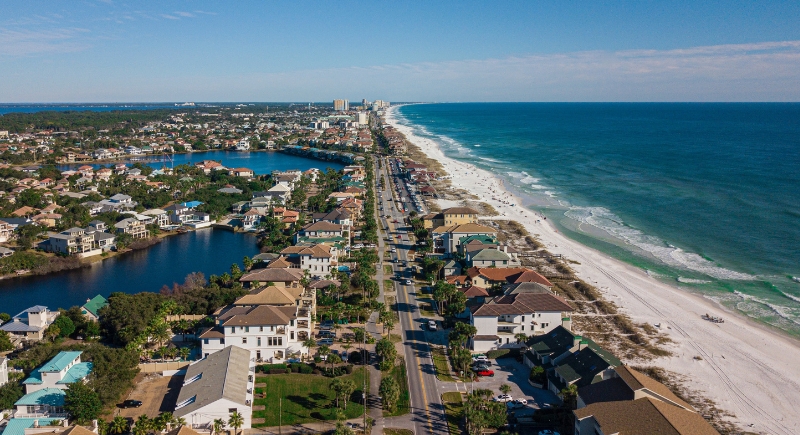17 States Where Retirees Are Getting Crushed by Medical Bills
Medical bills are quietly becoming one of the most damaging financial burdens for aging Americans. Even with insurance in hand, many retirees are watching their savings vanish—thanks to high deductibles, confusing coverage, and a billing system that feels like it was designed to confuse.
To save you from that fate, we reveal the top places where retirees are feeling the financial pinch the most when it comes to healthcare.
South Dakota

Credit: Getty Images
In South Dakota, rural retirees face some of the steepest medical expenses in the nation. The projected 2025 data puts 17.7% of adults in medical debt, the highest rate of any state. Hospitals are few and far between, and that lack of local care drives up costs. Even basic treatments can require long travel and out-of-pocket expenses that insurance doesn’t always cover.
Mississippi

Credit: Getty Images
Medicaid expansion? Still off the table. That decision has left a large group of Mississippi retirees stranded in the gray zone—too well-off for aid, not well-off enough to stay out of debt. About 15.2% of adults are expected to carry medical debt, fueled by high costs, limited access, and some of the lowest health rankings in the country.
North Carolina

North Carolina
North Carolina has been trying to close some of its healthcare gaps with Medicaid expansion, but plenty of retirees are still falling through the cracks. Roughly 13.4% of adults in North Carolina are projected to owe money for healthcare. Even routine care can end up in collections, and the average debt amount here isn’t exactly spare change.
Arkansas

Credit: Getty Images
Medical debt in Arkansas affects nearly one in five people. In 2022, 17.8% of residents had medical bills in collections. Between rural infrastructure gaps and higher rates of chronic illness, retirees with coverage still find themselves battling big deductibles and even bigger headaches.
Indiana

Credit: Getty Images
Indiana lets creditors chase medical debt for up to six years. Combine that with 16% of families having accounts in collections, and you’ve got retirees dealing with bills that feel like they’ll outlive them. If we talk about simple numbers, the state has over $2.2 billion in medical debt.
West Virginia

Credit: Getty Images
With 13.3% of adults carrying medical debt (well above the national average), West Virginia’s retirees face a double whammy: fewer providers and more chronic illness. That’s a recipe for delayed care and maxed-out credit cards.
Georgia

Credit: Getty Images
Georgia’s big cities have some solutions, but out in the country, retirees find healthcare access sparse and expensive. Up to 12.7% of adults are in debt, and many seniors here are stuck between long drives and longer bills. When care is available, costs often exceed what Medicare or supplemental plans will cover.
Kentucky

Credit: Getty Images
Despite early Medicaid expansion, about 12% of Kentucky adults still report medical debt. The issue isn’t just access—it’s the surprise charges from hospital stays or treatments not covered under retirement-age policies. For seniors on fixed incomes, these unexpected bills can linger in collections for years.
South Carolina

Credit: pexels
Up to 11.7% of South Carolina’s adult population reports medical debt, and the state has struggled to maintain its healthcare infrastructure, especially in rural areas. Retirees often find themselves traveling long distances to see specialists or facing billing confusion that leads to delayed payments and long-term credit damage.
Tennessee

Credit: Getty Images
Back in 2018, 22% of Tennessee residents with credit reports had medical debt on their records. Efforts are underway to restrict hospitals from denying care based on unpaid bills, but older adults have already seen their finances destabilized by sudden ER visits.
Louisiana

Credit: Getty Images
Older adults in Louisiana are contending with nearly $2 billion in medical debt, a figure that exceeds the annual budget of New Orleans. Seniors here are heavily impacted by high poverty rates and poor overall health indicators, which translate into large out-of-pocket expenses even when insured.
Texas

Credit: Getty Images
Texas leads the country in the uninsured rate. And yes, that includes plenty of near-retirees who age into Medicare with a backlog of unmet health needs. In fact, 21.7% of its adults aged 19-64 lacked coverage in 2023, which will undoubtedly lead to bigger bills, bigger stress, and not much of a safety net.
Alabama

Credit: Getty Images
In Alabama, plenty of retirees don’t qualify for Medicaid but also can’t afford solid private plans. Add in chronic illness and unclear billing practices, and you’ve got a long-term relationship with medical debt. Over 100,000 residents lack access to affordable healthcare despite clear medical need.
Oklahoma

Credit: Wikimedia Commons
Oklahoma is making moves to protect residents from aggressive debt collection, but 8.8% of adults are already in the red. The state’s past delays in Medicaid expansion, along with elevated hospital costs, have made borrowing for healthcare a common survival tactic.
Florida

Credit: pexels
Florida’s aging population has a unique problem: debt despite insurance. Though only 6.6% have medical debt in collections, the median balance of $1,593 indicates how large a burden each case can be. New bills aim to shorten collection windows, but damage to credit and savings has already taken a toll.
Nevada

Credit: pixabay
Retirees in Nevada face mounting medical debt tied to healthcare costs. A significant share of the population remains uninsured or underinsured, which makes even routine procedures financially risky. The financial pressure on older adults is evident across both urban and rural communities.
New Mexico

Credit: Getty Images
In New Mexico, the combination of high poverty levels and sparse medical infrastructure has left many retirees vulnerable to debt. Even with coverage, limited provider access and long wait times can lead to delayed care, worsening conditions, and costs. The burden isn’t always visible in statistics, but its effects are deeply felt.